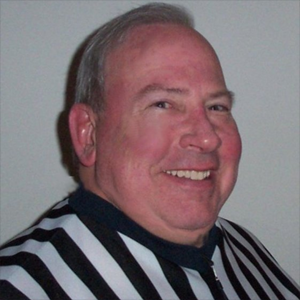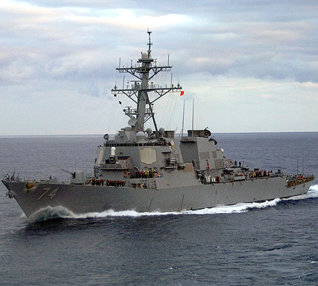
Rndballref
20 Years Experience
Chicago, IL
Male, 60
For twenty years I officiated high school, AAU and park district basketball games, retiring recently. For a few officiating is the focus of their occupation, while for most working as an umpire or basketball referee is an avocation. I started ref'ing to earn beer money during college, but it became a great way to stay connected to the best sports game in the universe. As a spinoff, I wrote a sports-thriller novel loosely based on my referee experiences titled, Advantage Disadvantage
No, by rule they cannot, but it depends (and the following discussion assumes the offensive player does NOT have the ball):
Coaches teach the armbar technique but if the arm in the back prevents an offensive player from moving to another legal spot, it is holding.
If the armbar is set within the verticality the defender is entitled to, and the defender's forearm is used to keep from being pushed backward by the offensive player then there is no foul, or an offensive foul.
I always looked to see if the armbar moved foreward to push the offensive player off his spot, then it is a foul. If the armbar did not push the opponent, I would not call it
I call it bad preventative officiating. One of the officials should count the players after each time out, and prevent the play from starting until you have ten players on the floor. However, once the play starts the fifth player cannot come back in until there is a dead ball whistle.
OK, we need some common sense here. Normally after a time out and the warning horn sounds, a player would be denied entering the game. This is to eliminate delays due to substitution gamesmanship (in pro hockey for example the home team has "last substitute"). But in the case where a coach has 30 seconds to replace a fouled out player this rule should not, and does not apply to either team. If common sense prevails, the officials should let A-6 in the game.
Well, the referee is considered to be part of the floor where he is standing. If he is out of bounds and the ball touches him, it is out of bounds. If he is in bounds and the ball touches him, play on.
Navy Officer (Former)
 Do you think there's a chance the US reinstates the draft?
Do you think there's a chance the US reinstates the draft?
Casting Director
 What do you look for when auditioning candidates for reality TV?
What do you look for when auditioning candidates for reality TV?
CBP Officer
 What are the telltale signs you look to indicate someone's lying?
What are the telltale signs you look to indicate someone's lying?
The answer is yes. A rule change for this coming season (2014-15) in NFHS rules states: Arm sleeves, knee sleeves, lower leg sleeves and tights are permissable as long as they meet the color and logo restrictions.
Technically speaking, it is a technical team foul for not coming onto the court in a timely manner after a time out or start of a quarter or overtime. Preventive officiating would dictate giving the team a little leaway to come onto the court, but if a coach refuses then a T should be called.
Sounds like the ref was confused because if the possession team is slow to come on the court it is legitimate to put the ball down on the throw in area and begin a five count. However, when the defense refuses to come out, T is the appropriate penalty, not putting the ball in play without the defense.
It is confusing because there are different philosophies of how to call these situations. The rules clearly state that a foul intentionally committed should be called intentional and administered with 2 free throws and the ball at point of interruption.
Most referees will avoid calling intentional fouls if the foul is not severe, the player attempted to go after the ball, and/or did not grab the player. Here is the dilemma...if you wait to make sure a foul is a foul when the whole gym is expecting one then it looks bad not to call an intentional and play can get rough. If you have a quick whistle on first contact it looks like you are aiding the losing team in their attempt to foul their way back into the game.
I wish I had a better answer for you. This is one of the toughest judgement calls in the game.
-OR-
 Login with Facebook
Login with Facebook (max 20 characters - letters, numbers, and underscores only. Note that your username is private, and you have the option to choose an alias when asking questions or hosting a Q&A.)
(A valid e-mail address is required. Your e-mail will not be shared with anyone.)
(min 5 characters)
By checking this box, you acknowledge that you have read and agree to Jobstr.com’s Terms and Privacy Policy.
-OR-
 Register with Facebook
Register with Facebook(Don't worry: you'll be able to choose an alias when asking questions or hosting a Q&A.)